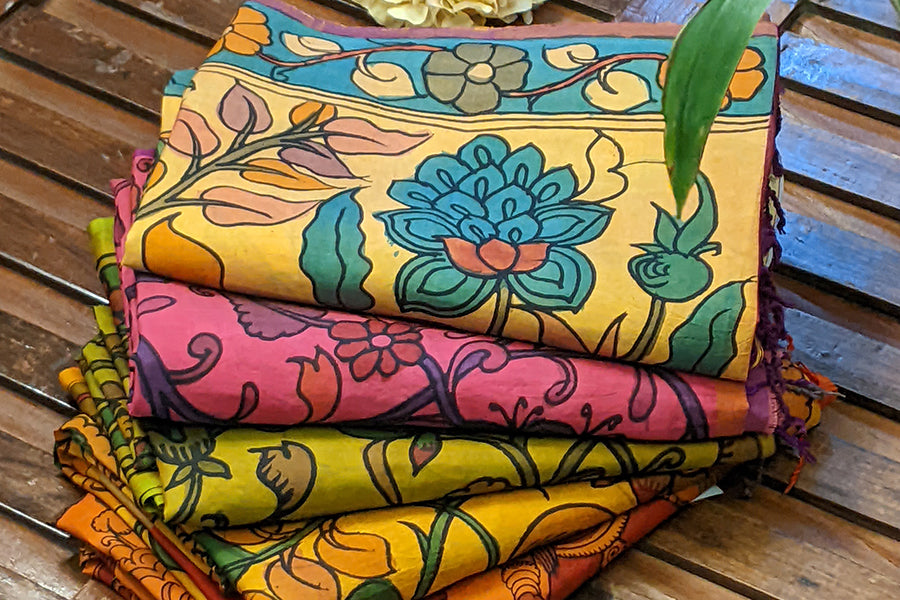Saree bestows a completely feminine, alluring and enticing look to the wearer, irrespective of the style. Saree, is the signature wear flaunted by all Indian women proudly, in a plethora of styles and draping methods, both modern and traditional.
Every region has a unique way of draping the so-tagged six yard or nine yard wonder, though even the number of yards worn change from state to state.
Here we go through some olden but golden ways to sport the saree, practised in different states of India.
Athpourey Shari of West Bengal

A box-pleated style, this type of saree is quite different from other draping styles, with two pallus coming from back to the front. Traditionally, Bengali women hang a bunch of keys at the end of the pallu thrown to the right shoulder signifying her as the important woman of the household.
Nauvari Saree of Maharashtra

As soon as the sounds of a Lavani folk song reach our ears, we picturise a cheerful energetic dancer sporting the Nauvari saree. Native to Maharashtra, this saree spans nine yards, as conveyed in its name and has the bottom part styled like a dhoti. It has an unusual draping style around leg like a dhoti, while the upper part looks like a normal saree.
Madisaru of Tamilnadu

The Brahmin community of Tamilnadu wear the Madisaru traditionally on special occasions and festivities and it is one of the toughest draping styles in 9 yards. It is traditionally worn during marriages and festivities. A very important part of the Iyer and Iyengar culture of Tamil Nadu, the Madisaru was worn by women, traditionally after marriage. It follows a half man and half woman (Ardhanareeshwara) style of draping; the lower half is draped like a dhoti while the upper half is like usual saree.
Settu Saree of Kerala

In contrast to sarees elsewhere, Kerala tradition sees the saree packed in two separate pieces, mostly of cream white colour with a golden zari border, known as settu-mundu. With time, it has evolved as a common saree but in same colours and goes by the name of settu-saree. Another two-piece saree drape is the mundumneriyathum in traditional Brahmin community, where, mundu (lower garment) is tucked inside the blouse.
SeedhaPallu of Gujarat

Seedhapallu, the everyday saree style of Gujarat, Uttar Pradesh and Odisha resembles ghagra-choli where pallu is used as dupatta in the front. An intricately worked pallu displays its full beauty when draped to the front.
The Nivi style of Andhra Pradesh

The Nivi-drape originating from Andhra Pradesh is the foundation of the currently common style of saree draping. Originally the Nivi-drape was sported by royalty. The Nivi drape can be used while draping a saree in any fabric, right from the most traditional ones like cotton and silk.The Nivi style of saree draping is so common and popular, that most westerners as well as a lot of Indians confuse it as being ‘The Saree’. The Nivi style drape is so versatile that it can be used to highlight a number of elements of the ensemble, like the pallu or the blouse or even the silhouette of the wearer.
In addition to the above there are numerous other styles of sporting the saree followed by the other states of India like The Bootheyara, HalakkiVokkaliga and Coorgi Style of Karnataka, Bogilli and Kappulu of Andhra Pradesh, Kotapad of Orissa, Santhal drape from Jharkhand Mekhela chador from Assamand Innaphi and Phanek from Manipur.

Though the styles and drapes range in hundreds, these are some of the most practiced styles. Be it a modern drape, or a traditional one, saree is sure to give a definitive elegant appearance to anyone flaunting it with confidence. It is surely among the innumerable treasures gifted to us by our vibrant and culture enriched nation.



